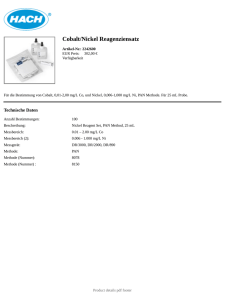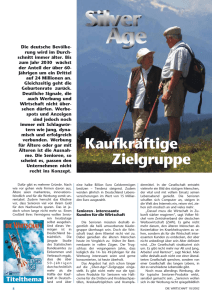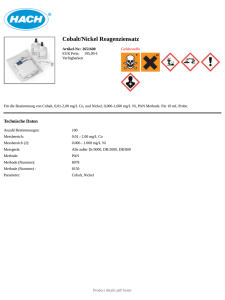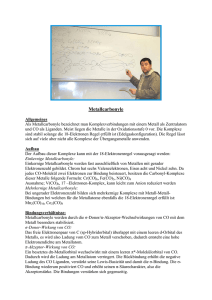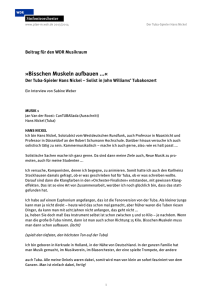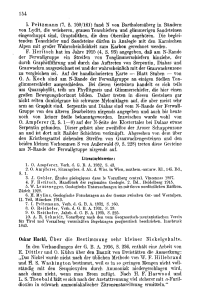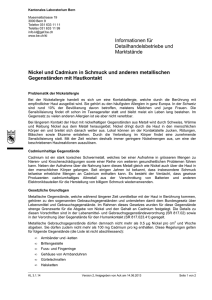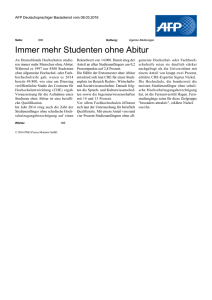Synthese und Untersuchungen photoschaltbarer Liganden
Werbung
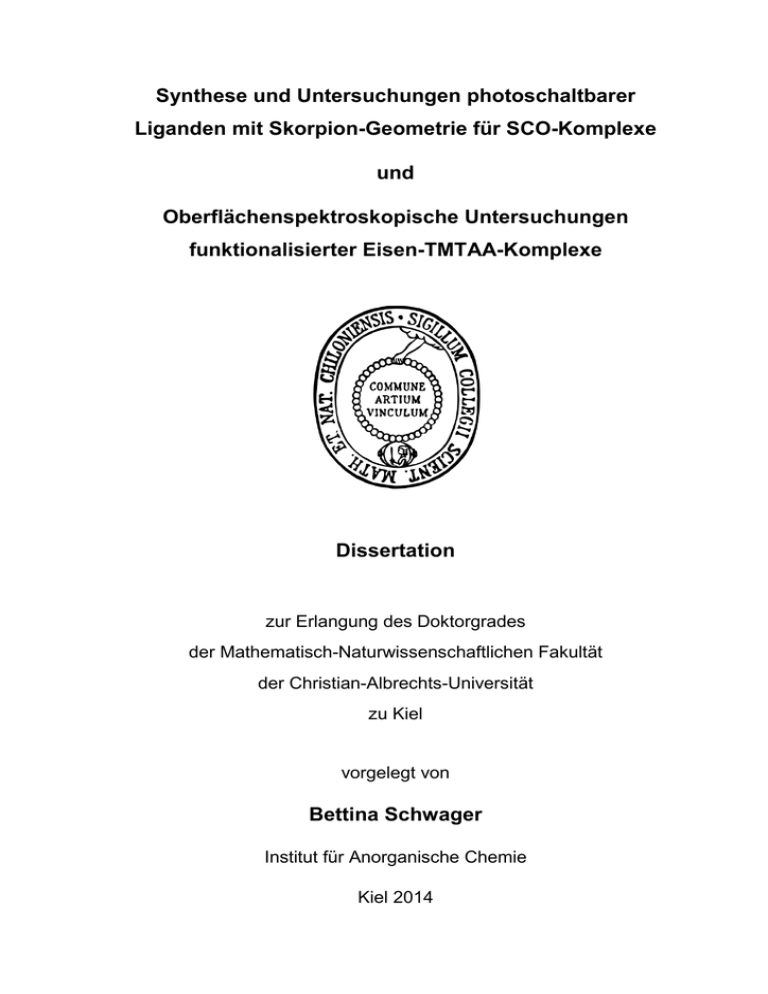
Synthese und Untersuchungen photoschaltbarer Liganden mit Skorpion-Geometrie für SCO-Komplexe und Oberflächenspektroskopische Untersuchungen funktionalisierter Eisen-TMTAA-Komplexe Dissertation zur Erlangung des Doktorgrades der Mathematisch-Naturwissenschaftlichen Fakultät der Christian-Albrechts-Universität zu Kiel vorgelegt von Bettina Schwager Institut für Anorganische Chemie Kiel 2014 Referent: Prof. Dr. F. Tuczek Korreferent: Prof. Dr. N. Stock Tag der mündlichen Prüfung: 27.10.2014 Zum Druck genehmigt: 06.11.2014 gez. Prof. Dr. W. J. Duschl, Dekan Die vorliegende Arbeit wurde unter Anleitung von Prof. Dr. Felix Tuczek in der Zeit von Februar 2010 bis September 2014 am Institut für Anorganische Chemie der Christian-Albrechts-Universität zu Kiel im Rahmen des Sonderforschungsbereiches SFB 677 „Funktion durch Schalten“ angefertigt. Kurzzusammenfassung Die vorliegende Arbeit befasst sich mit der Synthese und Charakterisierung neuer Spin-Crossover-Koordinationsverbindungen mit den Übergangsmetallen Eisen(II), Eisen(III) und Nickel(II) und photoschaltbaren Liganden. Die Systeme könnten in der medizinischen Diagnostik als mögliche photoschaltbare Kontrastmittel in der MRT Verwendung finden. Im ersten Teil der Arbeit wird die Synthese von modifizierten photoschaltbaren Salpn-Liganden beschrieben und deren Umsetzung zum entsprechenden Nickel(II)Komplex. Die modifizierten photoschaltbaren Nickel(II)-Salpn-Komplexe wurden daraufhin untersucht, ob durch cis/trans-Isomerisierung und Koordination an das Nickel(II) ein Spinwechsel hervorzurufen ist. Dieser Effekt wird Light-Driven Coordination Induced Spin State Switching (LD-CISSS) genannt. Das Schaltverhalten des Liganden in Lösung wurde mittels UV/Vis- und NMRSpektroskopie untersucht. Des Weiteren diente die NMR-Spektroskopie mit Hilfe der Evans-Methode zur Analyse des magnetischen Momentes des Nickel(II)-SalapoEster-Komplexes in Lösung. Um die Koordinationsfähigkeit eines axialen Liganden zu untersuchen, wurden die Assoziationskonstanten von Pyridin am Nickel(II)-SalpnKomplex bestimmt. Der zweite Teil der Arbeit handelt von der Synthese von Eisen(II)- und Eisen(III)TMTAA-Komplexen mit unterschiedlichen axialen Liganden (CO; CN; SCN und photoschaltbaren Liganden mit unterschiedlichen spektroskopischen Markergruppen). Sie wurden im Festkörper mittels Schwingungsspektroskopie und Mößbauerspektroskopie untersucht. Die Isomerisierung der koordinierenden photoschaltbaren Liganden konnte in Lösung mit UV/Vis-Spektroskopie verfolgt werden. Weiterhin wurden diese Komplexe auf eine Gold(111)-Oberfläche fixiert und mit Hilfe von IRRA-Spektroskopie untersucht. Das Schalten auf der Oberfläche sollte durch PM-IRRA-Spektroskopie untersucht werden. Ebenso wurden unterschiedliche Präparationsmethoden für die Oberflächenfixierung solcher Komplexe auf Gold(111) untersucht, welche ebenfalls mit IRRA-Spektroskopie geprüft wurden. Die Anordnung der Komplexe [FeII(TMTAA)] und [FeII(TMTAA)(CO)] auf Gold(111) konnte per UHVSTM charakterisiert werden. Abstract The main goal of the present Thesis was the synthesis and characterization of new spin-crossover coordination compounds with the transition metals iron(II), iron(III) and nickel(II) and photo-switchable ligands. A potential application of these systems could be in the field of medical diagnostics as photo-switchable contrast agents in MRI. In the first part of this Thesis, the synthesis of modified photo-switchable Salpn ligands and the respective nickel(II) complexes is described. The modified photoswitchable nickel(II)Salpn complexes were investigated to see whether the cis/trans isomerization and subsequent coordination to the nickel(II) induces a spin change from low to high spin. This effect is called Light-Driven Coordination Induced SpinState Switching (LD-CISSS). The switching behavior of the ligand in solution was followed by UV/Vis and NMR spectroscopy. The NMR-Evans method was employed to measure the magnetic moment of the nickel(II) Salapo complex in solution. To investigate the coordination ability of an axial ligand, the association constants of the pyridine nickel(II) Salpn complex were determined. The second part of the thesis deals with the synthesis of iron(II) and iron(III) TMTAA complexes with different axial ligands (CO, CN, SCN and photo-switchable ligands with different spectroscopic marker groups). The products were studied in the solid state by vibrational spectroscopy and Mössbauer spectroscopy. UV/Vis spectroscopy in solution provided insight into the switching process of the coordinated photoswitchable ligands. In addition, these complexes have been attached to a gold(111) surface and studied by IRRA spectroscopy. The switching on the surface was investigated via PM-IRRA spectroscopy. In this context, different methods of preparation for the fixation of such complexes on the gold(111) surface were tested and studied by IRRA spectroscopy. The formation of the complexes [FeII(TMTAA)] and [FeII(TMTAA)(CO)] on gold(111) was characterized by UHV-STM.

